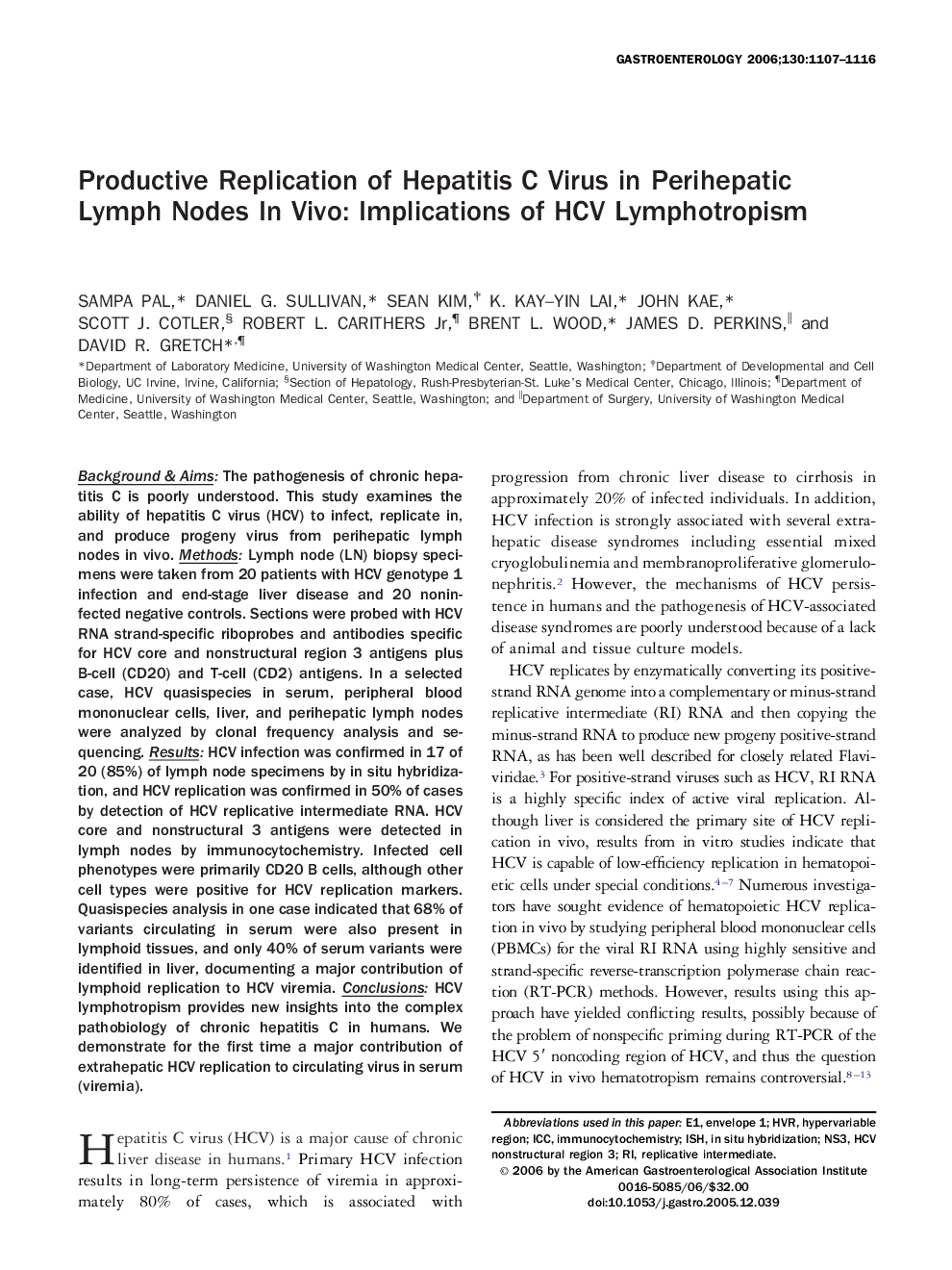| Article ID | Journal | Published Year | Pages | File Type |
|---|---|---|---|---|
| 3297770 | Gastroenterology | 2006 | 10 Pages |
Abstract
Background & Aims: The pathogenesis of chronic hepatitis C is poorly understood. This study examines the ability of hepatitis C virus (HCV) to infect, replicate in, and produce progeny virus from perihepatic lymph nodes in vivo. Methods: Lymph node (LN) biopsy specimens were taken from 20 patients with HCV genotype 1 infection and end-stage liver disease and 20 noninfected negative controls. Sections were probed with HCV RNA strand-specific riboprobes and antibodies specific for HCV core and nonstructural region 3 antigens plus B-cell (CD20) and T-cell (CD2) antigens. In a selected case, HCV quasispecies in serum, peripheral blood mononuclear cells, liver, and perihepatic lymph nodes were analyzed by clonal frequency analysis and sequencing. Results: HCV infection was confirmed in 17 of 20 (85%) of lymph node specimens by in situ hybridization, and HCV replication was confirmed in 50% of cases by detection of HCV replicative intermediate RNA. HCV core and nonstructural 3 antigens were detected in lymph nodes by immunocytochemistry. Infected cell phenotypes were primarily CD20 B cells, although other cell types were positive for HCV replication markers. Quasispecies analysis in one case indicated that 68% of variants circulating in serum were also present in lymphoid tissues, and only 40% of serum variants were identified in liver, documenting a major contribution of lymphoid replication to HCV viremia. Conclusions: HCV lymphotropism provides new insights into the complex pathobiology of chronic hepatitis C in humans. We demonstrate for the first time a major contribution of extrahepatic HCV replication to circulating virus in serum (viremia).
Keywords
Related Topics
Health Sciences
Medicine and Dentistry
Gastroenterology
Authors
Sampa Pal, Daniel G. Sullivan, Sean Kim, K. Kay-Yin Lai, John Kae, Scott J. Cotler, Robert L. Jr, Brent L. Wood, James D. Perkins, David R. Gretch,
